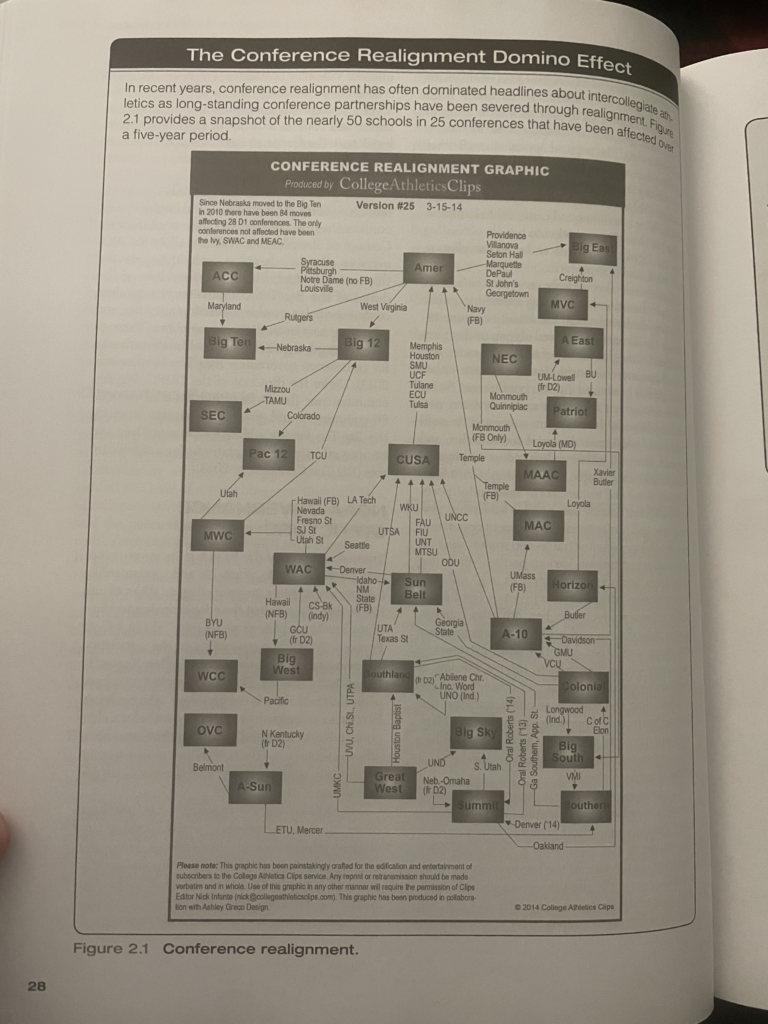Three levels of control:
- Institutional
- Conference
- National
Conferences can range in size, the largest is the Eastern College Athletic Conference, with D1, D2, and D3 championships (I assume in multiple sports, from the way it’s written).
There are alternatives to the NCAA (who knew), including the NAIA, the NJCAA, and the NCCAA. The newest is the USCAA, formed in 2009.
Internal and External stakeholders in collegiate athletics:
- Faculty
- Not commonly very deeply involved as a group
- FAR is a key role in being liaison between athletics and other faculty
- Governing boards
- External stakeholders
- Fans & alumni
- The media
- Entertainment industry
- Sports apparel industry
- The government
Conference musical chairs

NCAA governance structure
- The executive committee has the power to convene the entire association and controls the other boards of directors/leadership councils
- Each division has its own governance
- Division 1 is the subject of the Module 1 discussion
- Executive leadership is biased towards D1 by design
- Used to be equitable (what a world that must have been)
81% of NCAA revenue comes from TV contracts…
Probably more things to come, I’m tired.
